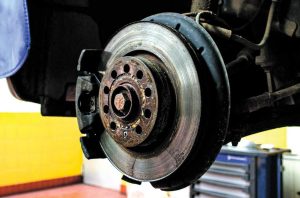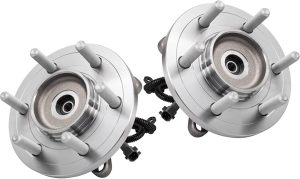Wheel hub assemblies are critical components in any vehicle’s suspension and drivetrain system. They house the wheel bearings and connect the wheel to the vehicle, enabling smooth rotation and stable handling. However, these components are constantly exposed to harsh environments — moisture, road salt, dirt, and debris — which can lead to corrosion. Corrosion in hub assemblies not only shortens component life but can also cause dangerous failures such as bearing seizure or wheel detachment.
Preventing corrosion in hub assemblies is thus essential for vehicle safety, longevity, and performance. This article explores the types of coatings and treatments used to protect hub assemblies, along with practical best practices to minimize corrosion risks.
Why Corrosion in Hub Assemblies Matters

Corrosion in hub assemblies can cause:
-
Increased friction and premature bearing wear
-
Compromised sealing surfaces, allowing dirt and moisture ingress
-
Structural weakening and potential failure of the hub flange or studs
-
Difficulties in disassembly during maintenance, increasing repair costs
Because of the hub’s vital role in vehicle operation, corrosion prevention is a key design and maintenance consideration.
Common Causes of Hub Assembly Corrosion
| Cause | Description | Impact |
|---|---|---|
| Road Salt & Chemicals | Used for deicing roads, highly corrosive | Accelerates rust formation |
| Moisture and Humidity | Water ingress, especially in wet climates | Promotes oxidation |
| Dirt and Debris | Abrasive particles cause wear and scratches | Damage protective coatings |
| Mechanical Stress | Micro-cracks from load cycles | Corrosion initiation points |
| Poor Maintenance | Lack of cleaning or lubrication | Exacerbates corrosion effects |
Types of Corrosion-Resistant Coatings and Treatments
Several industrial coatings and treatments help protect wheel hub assemblies from corrosion. These include:
1. Zinc Plating (Galvanization)
-
Description: Thin layer of zinc electroplated on steel.
-
Benefits: Provides sacrificial protection as zinc corrodes first.
-
Typical Use: Often on hub flanges and bolts.
-
Limitations: Thin coating can wear off; less effective in extreme environments.
2. Hot-Dip Galvanizing
-
Description: Dipping components in molten zinc bath.
-
Benefits: Thick, durable coating resistant to mechanical wear.
-
Typical Use: Larger hub assembly components.
-
Limitations: Adds slight thickness; not always suitable for tight tolerances.
3. Phosphate Coating
-
Description: Chemical conversion coating creating a phosphate layer.
-
Benefits: Improves paint adhesion and offers mild corrosion resistance.
-
Typical Use: Pre-treatment before painting or sealing.
-
Limitations: Minimal standalone corrosion protection.
4. Powder Coating
-
Description: Electrostatic application of powdered paint, cured with heat.
-
Benefits: Thick, uniform protective layer resistant to chipping and abrasion.
-
Typical Use: Exterior surfaces of hub assemblies.
-
Limitations: Requires surface prep; damaged coatings can trap moisture.
5. Electroless Nickel Plating
-
Description: Depositing nickel alloy layer chemically, without electricity.
-
Benefits: Provides uniform coating, excellent corrosion and wear resistance.
-
Typical Use: Precision parts needing both protection and wear resistance.
-
Limitations: Higher cost.
6. Ceramic Coatings
-
Description: Thin, hard ceramic film applied via spraying or dipping.
-
Benefits: Exceptional corrosion resistance and high temperature tolerance.
-
Typical Use: High-performance or heavy-duty applications.
-
Limitations: Expensive, more common in racing or industrial vehicles.
Comparative Table of Hub Assembly Coatings
| Coating Type | Corrosion Resistance | Durability | Cost | Typical Application |
|---|---|---|---|---|
| Zinc Plating | Moderate | Moderate | Low | Bolts, flanges |
| Hot-Dip Galvanizing | High | High | Medium | Large parts, structural hubs |
| Phosphate Coating | Low | Low | Low | Pre-treatment |
| Powder Coating | High | High | Medium | Exterior hub surfaces |
| Electroless Nickel | Very High | Very High | High | Precision parts |
| Ceramic Coatings | Very High | Very High | Very High | Performance/industrial hubs |
Best Practices to Prevent Corrosion in Hub Assemblies
1. Regular Cleaning and Inspection
-
Remove dirt, mud, and salt deposits from the wheel hub area.
-
Inspect for visible signs of rust, pitting, or paint damage.
2. Proper Lubrication
-
Use high-quality grease designed for wheel bearings.
-
Lubrication prevents moisture ingress and reduces wear.
3. Protective Seal Replacement
-
Ensure seals are intact and replace if cracked or damaged.
-
Proper sealing is critical to prevent contaminants entering the bearing.
4. Use of Anti-Corrosion Sprays
-
Apply corrosion inhibitors on exposed metal surfaces during seasonal changes.
-
Products with water displacement properties (e.g., WD-40) help protect.
5. Avoid Prolonged Exposure to Harsh Conditions
-
Rinse off road salt immediately after winter driving.
-
Park in covered areas when possible to reduce humidity exposure.
6. Choose Quality Replacement Parts
-
Use coated or treated hubs and bearings from trusted suppliers.
-
Verify if the component includes corrosion protection guarantees.
Summary Checklist: Corrosion Prevention Steps
| Step | Description | Frequency |
|---|---|---|
| Clean Hub Assemblies | Remove contaminants | Monthly or after harsh conditions |
| Inspect Seals | Check for cracks or wear | Every 10,000 km / 6 months |
| Lubricate Bearings | Repack with high-quality grease | According to vehicle manual |
| Apply Anti-Corrosion | Spray exposed metal surfaces | Before winter season |
| Use Treated Components | Buy pre-coated or treated parts | At replacement |
| Avoid Potholes | Minimize mechanical stress | Always |
Importance of Quality Wheel Hub Assemblies

Investing in premium wheel hub assemblies with advanced corrosion-resistant coatings significantly extends the life of your vehicle’s suspension components. Not only does this prevent costly repairs and downtime, but it also enhances safety and vehicle performance.
If you are in need of reliable, corrosion-resistant wheel hubs and bearings, you can Buy Wheel Hub & Bearings online from trusted suppliers here: Buy Wheel Hub & Bearings online
Conclusion
Corrosion in wheel hub assemblies is a persistent challenge, particularly for vehicles operating in harsh climates or on salted roads. However, with the right combination of advanced coatings, protective treatments, and proactive maintenance, the damaging effects of corrosion can be significantly reduced.
Whether through zinc plating, powder coating, or innovative ceramic treatments, modern hub assemblies can resist corrosion and deliver years of reliable service. Coupled with best practices such as regular cleaning, proper lubrication, and seal maintenance, vehicle owners can ensure that their wheel hubs remain strong, safe, and efficient.
Taking preventative action today not only safeguards your vehicle’s suspension system but also protects your investment and peace of mind on the road.